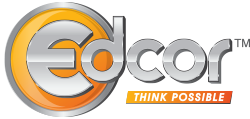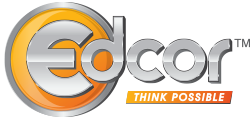The year 2020 was full of challenges and disruptions, yet the year offered learning opportunities like no other. Organizations and Educational Institutions worldwide went through immense digital transformation, frontline workers emerged as true heroes, and workforces displayed resilience and maintained productivity. Unsurprisingly, a calendar change does not make the issues go away. If 2020 was a year of the CTOs, then 2021 is the year that belongs to the CHROs as new trends have emerged and organizations face challenges like worker shortages, rethinking hiring to be diverse and inclusive, virtual onboarding, employee wellbeing amidst digital fatigue, and managing hybrid work cultures.
In the 2021 Work Trends Annual Report, Satya Nadella, CEO of Microsoft said “Over the past year, no area has undergone more rapid transformation than the way we work. Employee expectations are changing, and we will need to define productivity much more broadly — inclusive of collaboration, learning, and wellbeing to drive career advancement for every worker, including frontline and knowledge workers, as well as for new graduates and those who are in the workforce today. All this needs to be done with flexibility in when, where, and how people work”. This couldn’t be closer to the truth. From an HR perspective, everything has been on the front burner. It’s been difficult to see the forest for the trees. The HR policies and procedures have been formulated and re-formulated multiple times over the past 18 months due to the shifting demands and moving goalposts of organizational needs. HR has been instrumental in implementing these while keeping the morale of the workforce high. The biggest success story is that of the Healthcare workers who came out shining and avoided being burnt out because HR was behind them, supporting them every step of the way.
Why Hybrid Work Culture is here to stay?
Being cognizant of the sense of normalcy the vaccines have afforded us together with the apprehensions that the new coronavirus variants present, the learnings from upended work styles during the pandemic will have to be applied to the future. Over the past year, companies have undergone a digital transformation, and worker’s digital fluency has hugely expanded. Moreover, working remotely did not deter productivity as much as it was dreaded. If at all – it was enhanced due to lesser interruptions, quieter workplaces, focused time, saving time on the commute, and avoiding office politics depending on your role and home-office set-up. Most knowledge workers are still eager to continue working remotely at least part-time and for some sectors it still works.
However, one cannot neglect the needs of high-contact businesses that thrive from the workforce being on-site and did suffer because remote working led to productivity losses, poor team collaborations, loss of cohesiveness, and diminished problem-solving abilities affecting their bottom-line drastically probably more than the others. Also, one cannot negate the fact that with zero commute times, there are also zero boundaries between personal and professional time which ends up overwhelming employees. There’s also no denying that shift to remote shrunk networks and led to teams operating in siloes, digital exhaustion, and mental health issues due to the feelings of isolation.
Without a doubt – Hybrid work is the answer.
A hybrid work culture lends the advantages of remote working (flexibility, increased employee satisfaction due to greater work-life optimization, safety for immunocompromised family members or unvaccinated children) along with the critical benefits of the traditional work environments (face-to-face interactions, smoother resolutions or brainstorming, networking, cultural socializations).
Effective implementation of Hybridity will come from intricate thinking and assessment from managers.
- Outline management of office days and home days for work that’s best suited to each setting,
- Provide guidelines for office and remote work set-ups,
- Enlist meetings or evaluations that benefit from in-person interactions, and
- Set baseline expectations of/from flexibility based on work demands and roles.
Five key steps to make the Hybrid Work Culture a success
If you are an overwhelmed HR professional implementing the policies, guidelines, and mandates regarding being back in the office and still wondering what else could you do, the following steps may ease your journey as you steer your organization through a Hybrid Work Culture:
-
Mandatory office day(s):
Have some mandatory office days for regrouping and reconnecting – either for all employees or certain teams – based on the size of your organization, employee density, workspace distribution, and geographical location.
-
Keep communications channels open:
Even though a part of your workforce may be working from home please do not ever hesitate to reach out during work hours. Encourage employees to pick up the phone and have conversations that would lead to resolutions quicker rather than dragging issues out over email.
-
Empower them with the right tools:
Some of it is process, but some of it is Tools. Empower your workforce with the right online tools be it devices or software like MS Teams, Zoom, CRM tools for tracking sales, VPNs for network security, etc. to be on top of their game and for a seamless transition from office to home and back to office set-ups.
-
Flexibility:
Have a flexible mindset regarding the policies and procedures because they will evolve with the quick-changing paradigms in the workforce and behavioral forces.
-
Mental Health Support:
This is a critical time where not only physical health but also the mental wellbeing of the workforce needs to be taken care of with utmost sensitivity. To this end, considering the resources that you have at your disposal, engaging on-site therapists, support animals, having an open-door policy, and encouraging conversations about safety and wellbeing could help you. Employee wellness programs are also gaining importance presently and help in ensuring that the transition to office is perceived well. Further, engagement surveys will provide deeper insights on what measures are working and how successfully.
Nevertheless, Hybridity too is a moving target that will need to be managed critically and fairly. According to an HBR study, Building Trust, Sharing Expectations, and Focusing on Communication are three pillars that can lead to the successful management of a Hybrid workforce.
![]() Sara VanWagoner, VP Corporate Growth, Edcor
Sara VanWagoner, VP Corporate Growth, Edcor
Edcor is a woman-owned business and is the benchmark in education benefits administration. For 40 years, our customized service and solutions have allowed Fortune 500 Clients to use education benefits programs for employee recruiting, retention, and development. Please feel free to reach out to us!

Edcor is a woman-owned business and is the benchmark in education benefits administration. For 40 years, our customized service and solutions have allowed Fortune 500 Clients to use education benefits programs for employee recruiting, retention, and development. Please feel free to reach out to us!
Sara VanWagoner, VP Corporate Growth, Edcor



